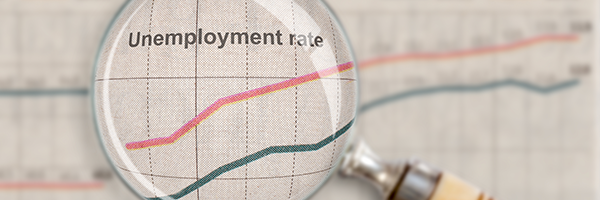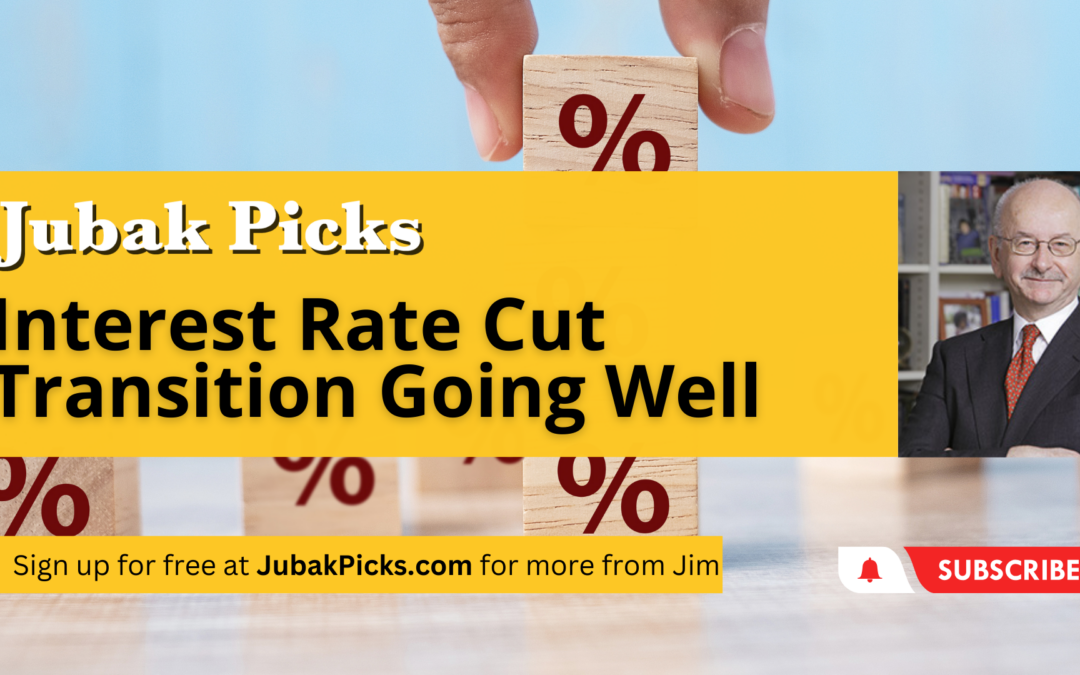
April 5, 2024 | Daily JAM, Morning Briefing |
The U.S. economy added 303,000 jobs last month. That was far more than than the 192,000 expected by economists.The unemployment rate dipped to 3.8%.
For today at least the stock market sees the report as “The glass is half full.” Yes, a stronger than expected labor market raises the odds that the Federal Reserve won’t begin its interest rate cuts at its June 12 meeting. But the strength in the economy is good for stocks. And if not June, then the Fed will cut in July, the thinking goes today.

April 3, 2024 | Daily JAM, Morning Briefing |
The Institute for Supply Management’s composite index of services fell 1.2 points to 51.4 a four-year low. The drop in the report released today, April 3, was the second month in a row. The services report came a day after the manufacturing sector report showed costs rising in the sector. Which, of course, led some investors and traders to worry that the Federal Reserve might put off the start of interest rate cuts beyond its June 12 meeting. The yield on the 10-year Treasury, which hit a new intraday high for 2024 at 4.37% yesterday, closed at 4.35% today. That’s still 17 basis points higher in a month. The relative calm today was also a result of remarks from Jerome Powell and other Fed officials that boiled down to “We told you the road to 2% inflation would be bumpy, but we haven’t seen anything in the recent data to change the direction of our policy or the timing of cuts.” A June cut, in other words, remains very much on the table.

April 1, 2024 | Daily JAM, Morning Briefing |
Could it be just two interest rate cuts in 2024 instead of three (or four as the most bullish wish)? The Institute for Supply Management’s manufacturing index showed U.S. factory activity unexpectedly expanding in March for the first time since September 2022 on a sharp rebound in production and stronger demand. Even worse, for those counting on early and often cuts from the Fed, input costs, AKA inflation, climbed.

March 22, 2024 | Daily JAM, Long Term, Morning Briefing |
You know the saying, When all you have is a hammer, every problem looks like a nail? How about this data world version, When you don’t track the data, you can’t see the problem? I was drawn to paraphrase the classic hammer/nail adage by the release of the Federal Reserve’s most recent economic projections, the Dot Plot, on Wednesday, March 20 when I thought about the economic data the Fed didn’t include in its projections.

March 20, 2024 | Daily JAM, Morning Briefing, Short Term |
The Federal Reserve unanimously voted to leave the benchmark Fed Funds rate in a range of 5.25% to 5.5%, the highest since 2001, for a fifth straight meeting. They left their projections in the quarterly Dot Plot for the Fed Funds rate by the end of 2024 at 4.6%. That was the same projection as in the December Dot Plot. And nothing in either the post-meeting press statement or in Fed chair Jerome Powell’s press remarks changed the timing on when the Fed will make its first interest rate cut.

March 18, 2024 | Daily JAM, Short Term, Videos |
Today’s video is Interest Rate Cut Transition Going Well. Well, so far. Until Wednesday, anyway. Last week we had another batch of bad inflation news: the inflation rate has stopped its decline, and even crept upward a bit. However, the market hasn’t panicked. Wall Street has moved the goalpost for a rate cut from the upcoming March 20 meeting to the June or July meeting. Last week’s bad news dropped the odds for a rate cut by the June 12 meeting on the CME Fedwatch Tool to 63.1%, down slightly from the previous day. The odds of no move on the June 12 meeting are on their way to 40%. Investors have set their sights on July. This will likely continue to push the market sideways until April when we get a bit of earnings excitement, again, around AI. Consolidation after the rally early in the year isn’t a bad thing for the market, and as long as no one panics, I think we’ll see a relatively smooth transition to the eventual interest rate cuts.

March 14, 2024 | Daily JAM, Morning Briefing, Short Term |
It’s becoming a refrain. Today another inflation measure came in hotter than expected. Which is the problem. It’s har to ignore the possibility that inflation has stopped its steady decline and its recent months has started to move up again. Is there a problem here beyond a stickiness in prices that is preventing the Federal Reserve from reaching its inflation goals? And that might be endangering even a June timetable for an initial interest rate cut? Prices paid to U.S. producers rose in February by the most in six months.

March 13, 2024 | Daily JAM, Morning Briefing |
There’s not much question of what the Federal Reserve will do at its March 20 meeting. The odds–99% on the CME Fed Watch Tool–are that the Fed will do nothing and leave interest rates at the current 5.25%-5.50% benchmark. But that day the Fed will also release its most recent quarterly revision of its economic projections for the year ahead, the Dot Plot. And those projections will have, potential, market moving power. The central question: Will the Fed hold to its projection of 2 interest rate cuts in 2024 or will the bank, worried by recent evidence that inflation has been stubbornly high in recent months, point toward just one cut by the end of the year?

March 12, 2024 | Morning Briefing, Short Term |
Core CPI inflation came in hotter than expected in February for a second straight month. The core Consumer Price Index, which excludes food and energy prices, increased 0.4% from January, the Bureau of Labor Statistics reported today. The year over year inflation rate rose to 3.8%. Economists had been projecting 3.7% annual rate. Core CPI over the past three months rose an annualized 4.2%, the highest annual rate since June. That adds to worries that the improvement in inflation has stalled in recent months.

March 10, 2024 | Daily JAM, Morning Briefing |
A month after the stock market was rocked by a worse-than-expected inflation report, investors are fearing a reprise when the latest data arrives on Tuesday. Last Thursday stocks rallied when Fed Chair Jerome Powell said in his testimony before the Senate that the central bank is “not far” from being ready to cut interest rates. But this week Fed officials are in their regular blackout period ahead of their meeting on March 19 and 20. Absent Fed commentary on the inflation report, stocks may be volatile again.

February 29, 2024 | Daily JAM, Mid Term, Morning Briefing |
The headline, all-items Personal Consumption Expenditures price index, the Federal Reserve’s preferred inflation measure, climbed at a 2.4% year over year rate in January. That was in line with what economists had forecast and down from the 2.6% annual rate in December. The core PCE, that is after stripping out more volatile food and fuel prices, climbed at a 2.8% year over year rate. In December the annual rate of core inflation had been 2.9%. But that was the end of the good news in today’s PCE inflation report.

February 26, 2024 | Daily JAM, Morning Briefing, Short Term |
On Thursday the financial markets get a new monthly PCE inflation report. The PCE, Personal Consumption Expenditures index, is the Federal Reserve’s favorite inflation measure. And Thursday’s report on January inflation could be bad news for the financial markets,











